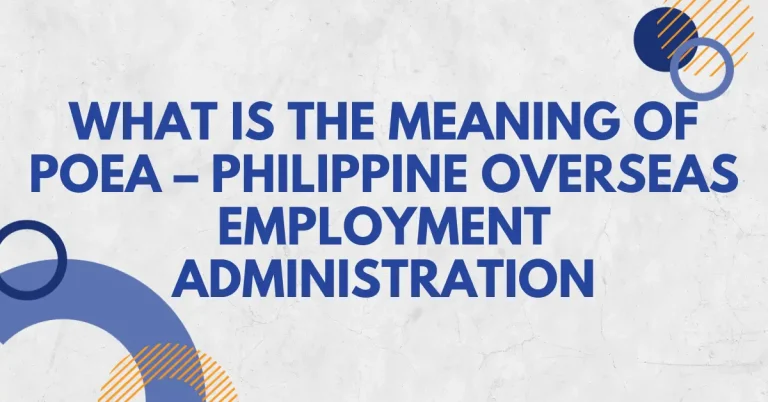VAT Calculator Philippines
The VAT Calculator Philippines is a helpful tool that makes it easy to figure out prices involving VAT (Value-Added Tax). You can use this calculator to find out the price before VAT, the VATCalculator Philippines rate, or the price that already includes VAT. Just enter information for two of the three options, and the calculator will automatically calculate the missing value for you. It’s a convenient way to quickly solve VAT-related calculations!
What is VAT?
VAT, which stands for value-added tax, is a special kind of tax that is added to goods or services at different stages of their production and distribution. It is an indirect tax, meaning it is not directly paid by individuals, but rather by businesses.
Governments all over the world use VAT as a major way to collect money for public services. In fact, it makes up about 20 percent of the total tax revenue worldwide. It is the most commonly used tax on consumption globally, and more than 160 countries have laws that enforce it.
In the European Union (EU), all member countries are required by law to have a minimum VAT rate. Since it was introduced in the 20th century, the VAT rates in Europe have consistently gone up. Interestingly, the United States is the only developed country that doesn’t have a VAT Calculator Philippines system in place. Instead, it relies on other types of taxes to fund government expenses.
Variations in VAT Calculator Philippines Across Countries
Every country has its own way of implementing a tax called Value Added Tax (VAT). While they all have a general plan for VAT, there are many differences in how they put it into action. The VAT in one country is not the same as the VAT in another country. These differences include the types of things that are taxed, like specific goods or services. It also depends on whether the tax applies to things coming into the country (imports) or going out of the country (exports). There are also rules about how to report and pay the tax, as well as penalties if you don’t follow the rules.
Let’s look at some examples to understand better. In the Philippines, senior citizens don’t have to pay VAT on most things they buy for themselves. In China, besides the regular VAT rate, there is a lower rate for certain products like books and oils. In many countries, there are certain things that are not taxed at all, like education, food, healthcare services, and charges from the government.
So, even though VAT exists in different countries, the way it works can be quite different depending on where you are.
Goods and Services Tax (GST)
A GST, which stands for goods and services tax, is sometimes called VAT in certain countries like Australia and Canada. People often use these terms interchangeably, and they may even use “sales tax” to mean the same thing. However, it’s important to note that GST and VAT can vary a lot from country to country. It’s interesting to know that no country has both a GST and a VAT at the same time.
Illustrative Example of How VAT Works
Let’s break down the process of VAT applied to coffee sold in a coffee shop so that it’s easier for 8th-grade students to understand.
When coffee is made and sold, there is a tax called Value Added Tax (VATCalculator Philippines) that needs to be paid. Let’s see how it works in the coffee chain, starting from the local farmer who grows the coffee beans.
The coffee beans are first grown by a local farmer. The farmer sells the fresh coffee beans to a nearby roaster for $5.00 per pound. The government requires a VAT of 10%, which means an additional 10% of the price needs to be paid as tax. So, the roaster adds $0.50 to the cost and pays a total of $5.50 per pound to the farmer.
The roaster then roasts the coffee beans to make them ready for brewing. They sell the roasted coffee beans to the coffee shop owner for $10.00 per pound. Again, the 10% VAT needs to be added. The shop owner now pays $11.00 per pound, which includes $10.00 for the roasted coffee beans and $1.00 in VAT. However, since the farmer already paid $0.50 as VAT, the roaster only needs to pay the remaining $0.50 in VAT to the government.
Now, the coffee shop owner can use each pound of roasted coffee beans to make 5 cups of coffee. They sell each cup for $4.00, and if they sell all 5 cups, they earn a total of $20.00. But remember, there’s still VAT to be added. For every 5 cups sold, the shop owner charges an additional $2.00 as VAT. So, from the customers who buy the coffee, the shop owner receives a total of $22.00, which includes $20.00 for the coffee and $2.00 in VAT. However, since $1.00 in VAT has already been paid by the farmer and the roaster, the shop owner only needs to pay $1.00 as VAT to the government.
In summary, VAT is a tax that is added at each step of the coffee chain. The farmer, roaster, and coffee shop owner all have to complete government paperwork for VAT. The farmer receives $5.50 per pound, the roaster pays $0.50 in VAT, and the shop owner pays $1.00 in VAT. This ensures that the government receives the appropriate tax amount from each person or business involved in the coffee chain.
Sales Tax VS VAT
| Sales Tax | VAT (Value Added Tax) |
| A tax paid on the sale of certain goods and services | A tax paid on the value added at each stage of production and distribution |
| Collected by the vendor from the end consumers during the final stage | Applied during the entire process of production and distribution |
| Not collected at different stages of the supply chain | Can be collected at multiple stages of production and distribution |
| Only imposed once when the consumer makes a purchase | Imposed at every step of the production and distribution process |
| Rates often expressed as a percentage of the price | Rates also expressed as a percentage of the price |
| Retail sales tax rates are generally lower (4-10 percent) | VAT rates are usually higher (14-25 percent) |
| Can lead to double taxation in some cases | No double taxation as tax paid during earlier stages can be deducted |
| Less effective at preventing tax evasion | More effective at preventing tax evasion |
| Easier and cheaper to administer compared to VAT | Requires more paperwork and tends to be costly to administer |
| Does not significantly impact businesses’ pricing strategies | Businesses may raise prices to compensate for VATCalculator Philippines |
| Total tax revenue generally remains the same, regardless of timing and frequency | Total tax revenue generally remains the same, regardless of timing and frequency |
| Can be less regressive and have a lesser impact on lower-income earners | Can be more regressive and affect lower-income earners more disproportionately |
| Progressive regulations may be needed to offset regressive effects | Progressive regulations can help offset regressive effects |
A sales tax is a type of tax that people pay when they buy certain goods and services. Unlike other taxes that are collected at different stages of the production and sale process, sales tax is only collected by the seller when the customer makes a purchase.
In comparison, there is another kind of tax called VAT (Value Added Tax) that works a little differently and is a bit more complicated. VAT is designed to prevent people from avoiding paying taxes or doing anything illegal related to taxes. It does this by applying taxes at every step of the production and distribution process, rather than just once at the end when the customer buys something. However, because VAT requires keeping track of a lot of paperwork, it can be more expensive to administer than sales tax.
Even though VAT is collected multiple times during the production and sale of a product, there is no double taxation, which means you don’t have to pay tax on top of taxes. VATCalculator Philippines is only imposed on the value that is added at each step, and any tax that was already paid during earlier stages can be subtracted. This prevents a situation where tax keeps piling up and getting more expensive. Sales tax, on the other hand, can sometimes lead to double taxation.
Both sales tax and VAT are expressed as a percentage of the price. Usually, sales tax rates are lower than VAT rates. For example, sales tax might be between 4 and 10 percent, while VAT can range from 14 to 25 percent. Contrary to what some people think, VAT doesn’t make businesses pay more taxes so that customers pay less. Instead, businesses would just increase their prices to make up for the extra taxes. In the end, the total amount of tax collected is usually similar, even though there might be differences in how and when the taxes are paid.
Studies have shown that VAT can affect people with lower incomes more than a sales tax does. This is because VAT is considered regressive, meaning it takes a bigger proportion of income from lower earners compared to higher earners. However, this can be balanced out by implementing regulations that make the tax system fairer, as can be seen in some European countries’ models of VAT.
Read More about GST: gstcalculatorau.com
Frequently Asked Questions
What does VAT stand for?
VATCalculator Philippines is the acronym for Value Added Tax.
How To Register For VAT
To register for Philippines VAT, a business has the option to submit its application by utilizing BIR Form No. 0605 at this location.
What is the VAT Threshold?
If an AA business’s annual VAT taxable turnover exceeds PHP3,000,000, it is required to register for VAT with the Bureau of Internal Revenue.
What does VAT inclusive mean?
When we say a price or invoice is VAT-inclusive, it indicates that the value-added tax (VAT) has already been included in the total amount.
What does VAT exclusive mean?
VAT exclusive refers to the absence of Value Added Tax (VAT) in the price or invoice.
What does net of VAT mean?
The expression “net of VAT” is synonymous with “VAT exclusive” (refer to the section just above for clarification).
Is SSS Contribution Taxable or Vat Exempt In The Philippines?
According to the Bureau of Internal Revenue and the Department of Finance, SSS is tax-exempt and shall be exempted from payment of VAT. The latest SSS table shows the new schedule, effective from January 2023 that is based on a “14% contribution rate”, with the employer paying 9.5% and the employee paying 4.5%.


